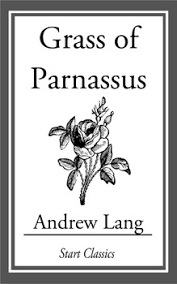THE LIMIT OF LANDS.
byThe Limit of Lands opens with a stillness not born from peace but from distance—the kind that exists between the living and the realms that stretch beyond. Here, the earth does not speak in the voices of birds or the movement of green branches; instead, it whispers through wind over dry grass and through the shadows of stone. The sea marks the furthest edge of what the world allows, lapping gently at the shore as though it too knows this is a place where boundaries blur. No temples remain—only ruins, and no cries rise, only the hush of things ending. In this space, everything waits: the earth, the sea, even the soul, balanced between memory and something unnamed. Like a tide that recedes and returns without fail, this boundary between here and the beyond holds stories that never stop echoing through time.
A path winds through the dust and toward the poplars, sacred to Persephone—the goddess of shadowed realms and returning cycles. Their leaves tremble without wind, and that tremble seems to say what no lips do: that this place is not for the living, but not yet for the dead. Standing there, one feels neither fear nor longing, only a quiet surrender to what must come. The ancients once came here with offerings, hoping for favor or farewell. Now, the altars lie bare, but something in the air still remembers their chants. Time, in this place, moves differently—measured not by hours but by presence and absence, light and the fading of it. It’s a setting not of despair, but of final understanding, where grief does not cry out but settles deep in the chest.
Even the sky feels thinner here, as if the gods themselves once walked this land and now watch from behind a veil of mist. The silence carries weight, not from emptiness but from everything it once held—love lost, farewells whispered, journeys paused. To walk this shore is to realize that all longing, whether for people or places or times now past, eventually brings us here, to the edge of what is. There is beauty in that truth, even if it’s sharp. To grieve is to have loved, and to stand at the limit of lands is to honor that love by carrying it, even into the unknown. The sea does not demand tears, but it reflects them back in silver if they fall.
For readers, this chapter invites more than passive reflection—it calls for a pause, a breath taken between action and acceptance. It reminds us that while life hurries forward, certain moments must be met in stillness. These spaces—emotional, spiritual, or even geographic—are the ones that shape us, not through loud declarations but through quiet realizations. The myths of Circe and Persephone offer more than legend; they offer metaphors for transformation. Circe’s isle decayed, not because the magic died, but because no joy remains untouched by time. Persephone, with her dual existence, teaches us that part of being whole is knowing both light and shadow.
There is a kind of gentle closure in recognizing these truths. One does not have to carry every wound forever, but neither should they be erased. At the limits of lands, nothing is wasted—not loss, not silence, not the ache that comes with remembering. It is where endings lie, yes, but also where something else may begin—not loudly, but like a faint ripple on the edge of water. And as the mist folds back over the shore and the poplars rustle without wind, there is peace—not in forgetting, but in understanding. The journey may continue, but some part of the heart remains here, grounded in what once was, before it returns again to the world.

